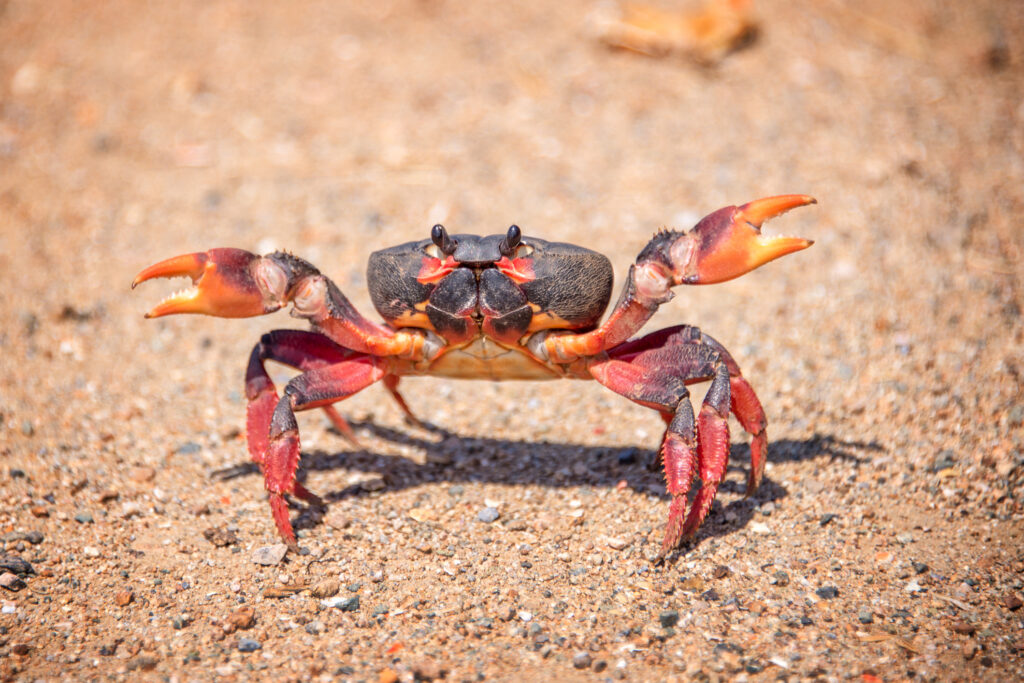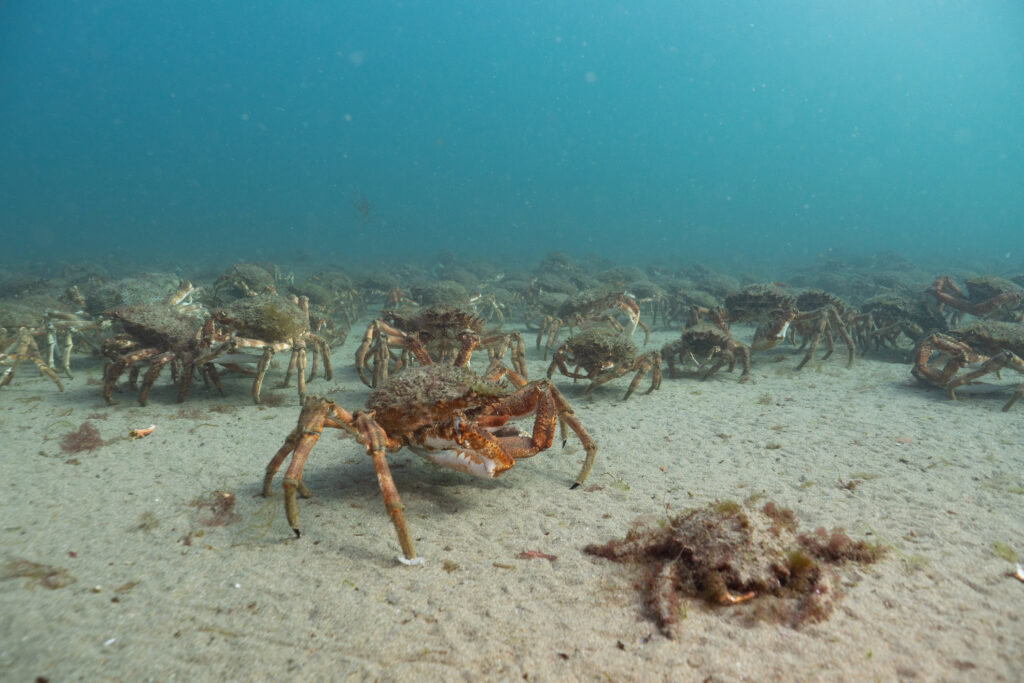Crabs are fascinating crustaceans and have captured the curiosity of both marine enthusiasts and casual beachcombers alike. From their curious sideways scuttling to their remarkable diversity, there’s much to learn and appreciate about these creatures.
So, let’s delve into the world of crabs and uncover some intriguing facts that may surprise you.
What is a crab?
Crabs belong to the subphylum Crustacea, a vast group of marine arthropods that also includes lobster, shrimp, and krill. These creatures are enclosed in an exoskeleton made of chitin, protecting their soft tissue.
They are what is known as a decapod crustacean, which refers to their number of legs.
How many types of crabs are there?
The world of crabs encompasses a remarkably diverse species, with over 6,800 known varieties. They come in a range of shapes, sizes, and colours, each adapted to its specific habitat and lifestyle. These crustaceans exhibit a stunning array of adaptations that have evolved over millions of years.
What do crabs look like?
Crabs typically have a hard shell, known as the carapace, which covers their body and provides protection against predators. Their bodies are divided into distinct segments, including the cephalothorax and abdomen, with appendages specialised for various functions. Most notably, crabs are renowned for their ten legs, with the front pair often modified into claws, or chelae, used for defence, feeding, and communication.

Do crabs move sideways?
The sideways movement of crabs is a result of their unique physiology and joint structure. While it might seem unusual compared to the forward locomotion of many other animals, this sideways scuttle offers several advantages.
It allows crabs to manoeuvre swiftly through their environment while keeping a low profile, minimising their exposure to potential threats. Additionally, their ability to move in multiple directions facilitates efficient foraging and hunting strategies.
Where do crabs live?
Crabs are primarily aquatic creatures, inhabiting a wide range of marine and freshwater environments. They can be found along coastlines, in estuaries, and even in deep-sea trenches. Some species are adapted to live exclusively in saltwater, while others thrive in brackish or freshwater habitats. Crabs display varying levels of social behaviour, with some species living solitary lives, while others form groups known as casts or colonies.
What do crabs eat?
The dietary preferences of crabs vary depending on their species and habitat. Many are omnivorous scavengers, feeding on a diverse range of organic matter, including algae, detritus, and small animals. Others are carnivorous predators, preying on molluscs, crustaceans, and even small fish. Crabs employ a combination of feeding appendages, including mandibles and maxillipeds, to capture and manipulate their food.
The lifespan of a crab
The lifespan of a crab varies widely among species, with some living only a few years, while others can survive for several decades. Factors such as environmental conditions, and reproductive strategies influence their longevity.
One important aspect of crab biology is their ability to moult, shedding their exoskeleton to accommodate growth and repair injuries. This process is essential for their continued development and survival.

Additional crab facts!
- Crabs have been around for millions of years, with fossils dating back to the Jurassic period.
- The smallest known crab species is the Pea Crab, measuring between 0.27 and 0.47 inches long.
- The Japanese Spider Crab holds the title of the largest crab species, with a leg span reaching up to 12 feet.
- Female crabs can produce thousands of eggs during a single reproductive cycle, ensuring the survival of their offspring.
- Crabs exhibit remarkable regenerative abilities, capable of regrowing lost limbs and damaged tissue.
- Communication among crabs often involves visual displays and tactile signals using their specialised claws.
Crabs are truly remarkable creatures that inhabit a diverse range of ecosystems worldwide. From their sideways movement to their intricate social behaviours, these crustaceans continue to fascinate scientists and nature enthusiasts alike.
So, next time you spot a crab scuttling along the shore, take a moment to marvel at the wonders of nature that lie beneath the waves. Don’t forget to book your tickets to Tynemouth Aquarium to see more of the world’s wonderful wildlife.
